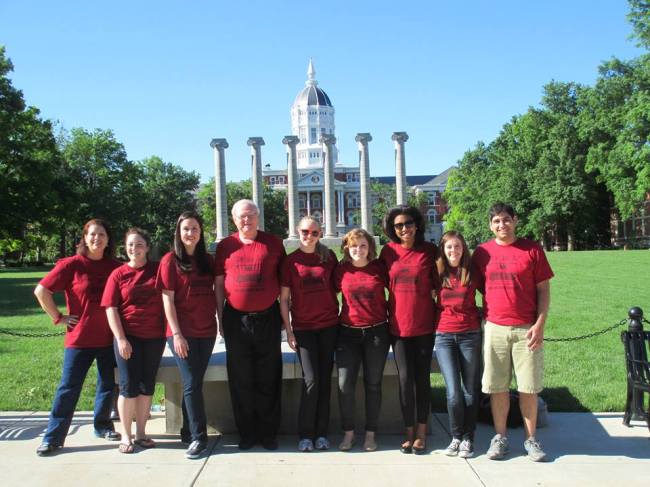Back in October, I took the Dow Jones News Fund, Inc. editing test. In December, received my results – a phone call from DJNF alerting me that I’d won a summer internship through the program and would be spending my summer working as a copy editor at Minneapolis’ Star Tribune.
I’m nearly two months into my internship, and while I’ve learned a lot here in Minneapolis, I think my favorite part of the experience was the eight-day editing course at the University of Missouri I took in late May. All of the DJNF editing interns – eight of us total, from all corners of the U.S. – participated in the week of intense editing exercises and lessons. Our instructors jokingly referred to the experience as “editing boot camp” – and they weren’t far off. We spent about nine hours a day in a classroom setting studying the details of everything from headline writing to double-checking numbers used in copy to whether to use “lie” or “lay.” In the evenings, we’d all go to work at The Columbia Missourian, the University of Missouri’s student newspaper.
The days were long, but incredibly rewarding. I left the editing course not only with a much deeper knowledge of copy editing, but with seven new close friends. From our separate newsrooms across the country, we still keep in touch – usually to laugh together when we see a funny headline or egregious AP wire story error (if we learned one thing during that editing course, it’s that absolutely everyone makes mistakes – that’s why copy editors are so important!).
Our DJNF instructor Brian Brooks, a retired journalism professor at the University of Missouri, said something during the week that has stayed with me all summer: “Editing is an art, not a science; you’re not always going to come up with the same answer.”
I carried that quote with me to the Star Tribune newsroom, where I see the importance of a strong copy desk every single day. Copy editors correct everything from fact checking to photo captions to headline writing. We’re the last eyes that see a story before it goes to print, so it’s our job to ensure accuracy.
It’s like the saying that every person should work as a waiter at least once in his or her life. That way, you fully appreciate the effort, and sometimes stress, that goes into serving a meal, and in turn you’ll be a better patron (and better tipper). The same holds true for copy editing. Since my very first newsroom job, I’ve worked as a reporter, and I still plan to pursue a reporting job after graduation. I just love talking to people and listening to their stories. But now that I’ve worked as a copy editor, I see all the “behind the scenes work” that goes into putting a story on the page and triple-checking it for errors before it goes to print.
Copy editors are a newsroom’s last lifeline and last chance to ensure accuracy before a story is released to the public eye. Reporters can’t – and shouldn’t – do it all by themselves, and if they do, quality will surely suffer. Through working on the copy desk every night alongside the attentive, hardworking editors at the Star Tribune, I’ve learned that a newspaper is only as strong as its copy desk.
Taylor Kuether, journalism major
Taylor Kuether (fourth from right) and her classmates at the DJNF “Editing Bootcamp.”

